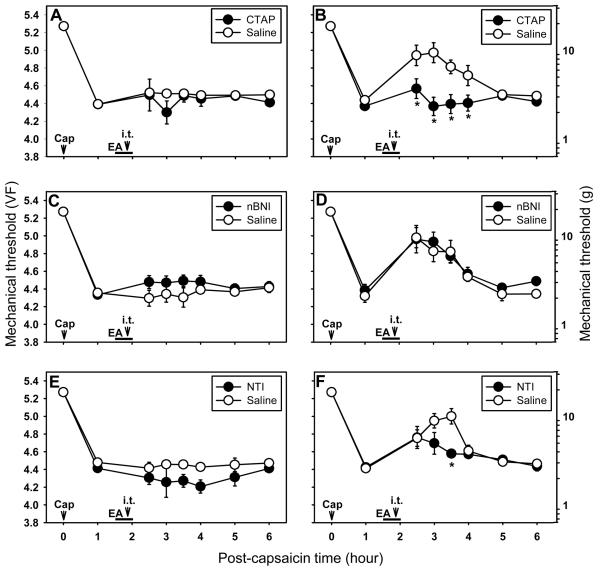Fig. 7.
Effects of intrathecal injection of subtypes of opioid antagonists on capsaicin-induced primary and secondary hyperalgesia. A and B show the effect of intrathecal D-Phe-Cys-Tyr-DTrp-Arg-Pen-Thr-NH2 (CTAP; μ-opioid receptor antagonist, 3 μg), C and D show the effect of nor-binaltorphimine dihydrochloride (nBNI; κ-opioid receptor antagonist, 7.3 μg), and E and F show the effect of intrathecal naltrindole hydrochloride (NTI; δ-opioid receptor antagonist, 9 μg). A, C, and E are for the primary hyperalgesia while B, D, and E are for the secondary hyperalgesia. All intrathecal injections were made at 10 min before termination of EA (20 min after start of EA). Data are expressed as means ± SEM. Number of animals - A and B: 6 in CTAP and 6 in Saline groups; C and D: 6 in nBNI and 6 in Saline groups; E and F: 6 in NTI and 6 in Saline groups. Data were analyzed by two-way repeated measure ANOVA, followed by the Holm-Sidak post hoc test. *, a value significantly (p<0.05) different from the corresponding value in the saline control group.

